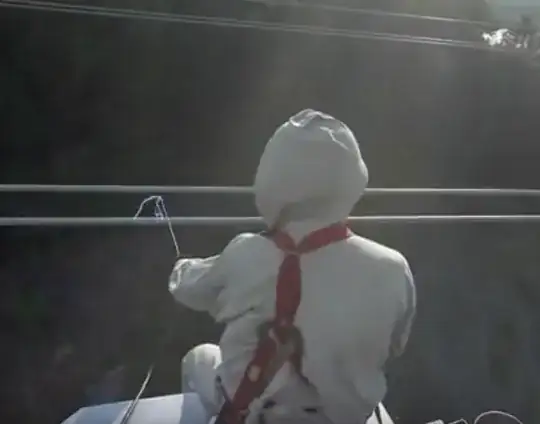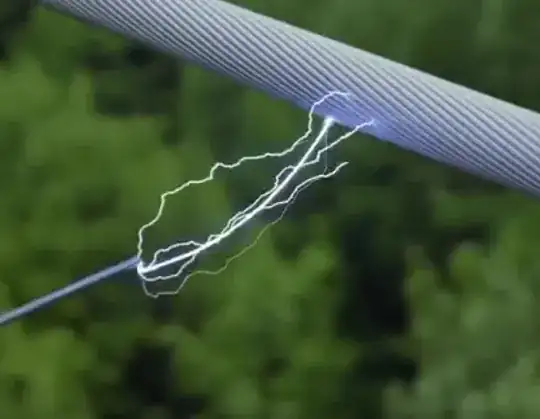The video High power line workers shows linemen servicing a live high voltage transmission line. As the helicopter approaches the line, the lineman reaches out with a metallic wand that is conductively connected to the helicopter and a standing discharge appears between the line and the wand.
What is going on? A significant amount of energy appears to be flowing between the line and the helicopter, but a complete circuit does not exist because the two bodies are only connected by a single conductor. Some answers to related questions imply that a single conductor can't electrocute a person:
AC or DC, you only get electrocuted if current passes through your body... Touching just one wire at a time gives the current nowhere much to go. (Source)
You will not get a shock unless you complete the circuit to ground. This is why power lines can be worked on while live, from a helicopter. (Source)
However, the video makes it clear that a significant amount of energy is flowing. Another answer claims that a body (e.g. bird) approaching a high-voltage line would only experience a transient current:
[I]nitially there's a potential difference between the wire and the bird and there would be a (very short lived) transient current which is similar to electrostatic discharge you feel when you touch an object with electrostatic charge build-up. (Source)
But the discharge in the video appears to be sustained instead of short-lived. Another poster states that the discharge is deadly and the conductive wand is essential for the linemen's safety:
[T]he initial equalization process [between the helicopter and line] would kill [the linemen] if the arc went through [his] heart instead of the conducting [wand]. (Source)
Some answers speak of capacitance, high electric fields and corona discharge. How can one understand the flow of electromagnetic energy and charged particles between the two bodies as the helicopter approaches the line?

